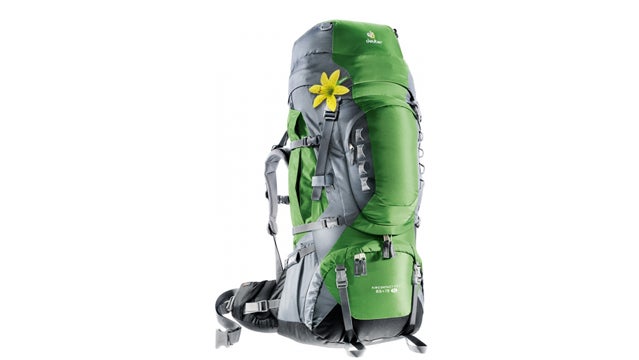°Â´Çłľ±đ˛Ô’s-specific backpacks have been on the market for years. And I don’t mean packs that are pink or purple or flowered or BeDazzled—although, they occasionally have one of these things (come with a removable flower adornment). °Â´Çłľ±đ˛Ô’s-specific packs are ergonomically designed to the fit the average female shape, taking into account curves, bosoms, shorter torsos, narrower widths, and the like. In general, women’s packs have shoulder straps—usually narrower—that sit differently on the shoulders than men’s. Pack frames are shorter because less length is needed in the torso and hip belts—also narrower—are flared to accommodate curves.
The truth of the matter is that “average” is an operative term. To state the obvious, we are all different shapes and sizes—some men have short torsos and fit into women’s packs, some women have long torsos and fit better in men’s packs. The thing that women’s-specific packs brought to the world is a plethora of new sizing options: more people will find a better-fitting pack.
That brings us to how to fit a pack. Regardless of whether you’re buying a women’s or a men’s pack, the fitting process is the same.
First, determine what you’ll be using the pack for. Recent innovations in frame design (as well as lighter, more compressible sleeping bags, pads, and such) mean more efficient functional space and sturdier loads in smaller sizes—you can now swap your go-to multi-day 65-liter heffer for a more svelte 55-liter pack that can do the same work.
Next up: your torso. Have a friend measure the length of your spine on your back while you stand up straight—start from the top of your hipbones and measure to the knobby vertebrae at the base of your neck. Most brands have size charts on their websites so you can match your spine length with their sizing systems.
The hip belt is the third factor to consider. Since it’s the true workhorse of the pack—carrying the load’s weight—it should fit snugly across the middle of the hipbones.
Lastly, check the harness fit. You want to make sure there isn’t any unnecessary rubbing that could cause chafing. The harness should allow for a few inches below the armpit and the shoulder straps should wrap over your shoulders and down the start of your back.
The good news: Packs have become more and more adjustable. Many brands offer adjustability in everything from hip belts to torso harnesses in order for multiple people to use the same backpack. The biggest rule of thumb is simply to head to the store and try on a variety of sizes until you find the one that is most comfortable.


